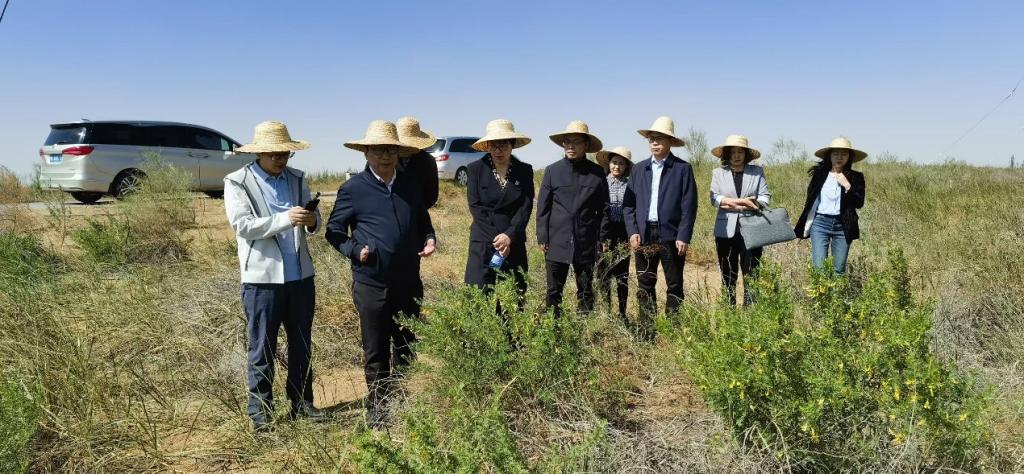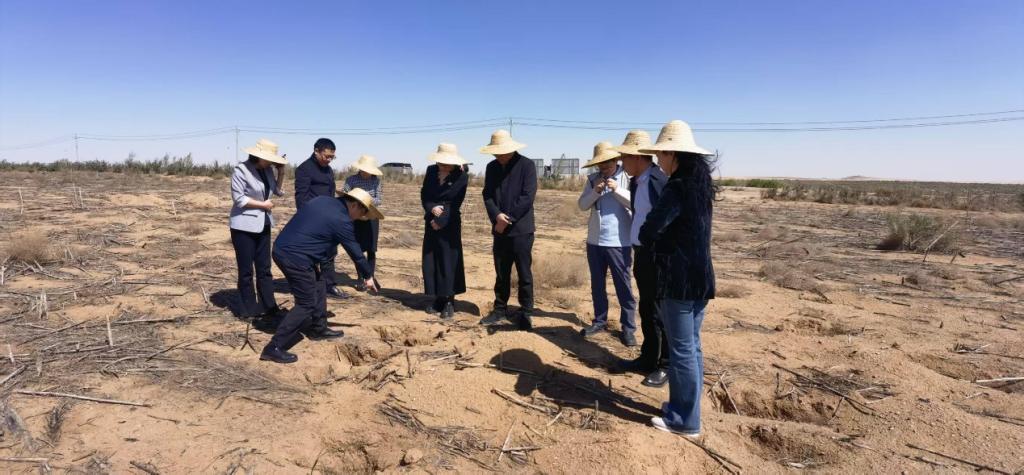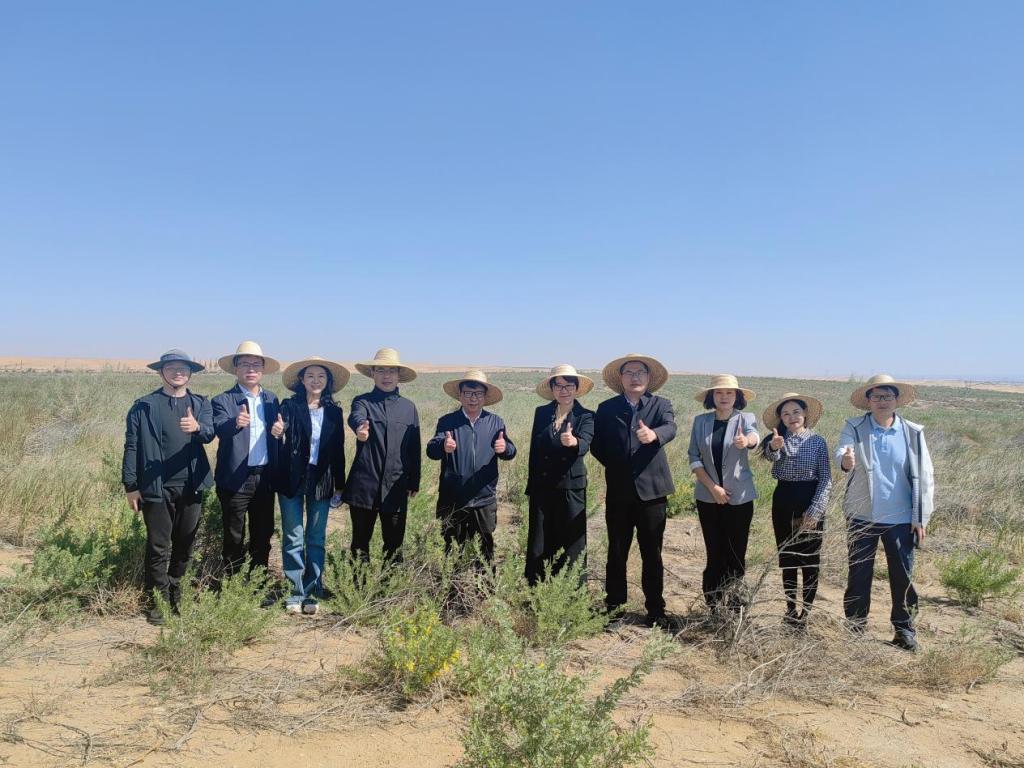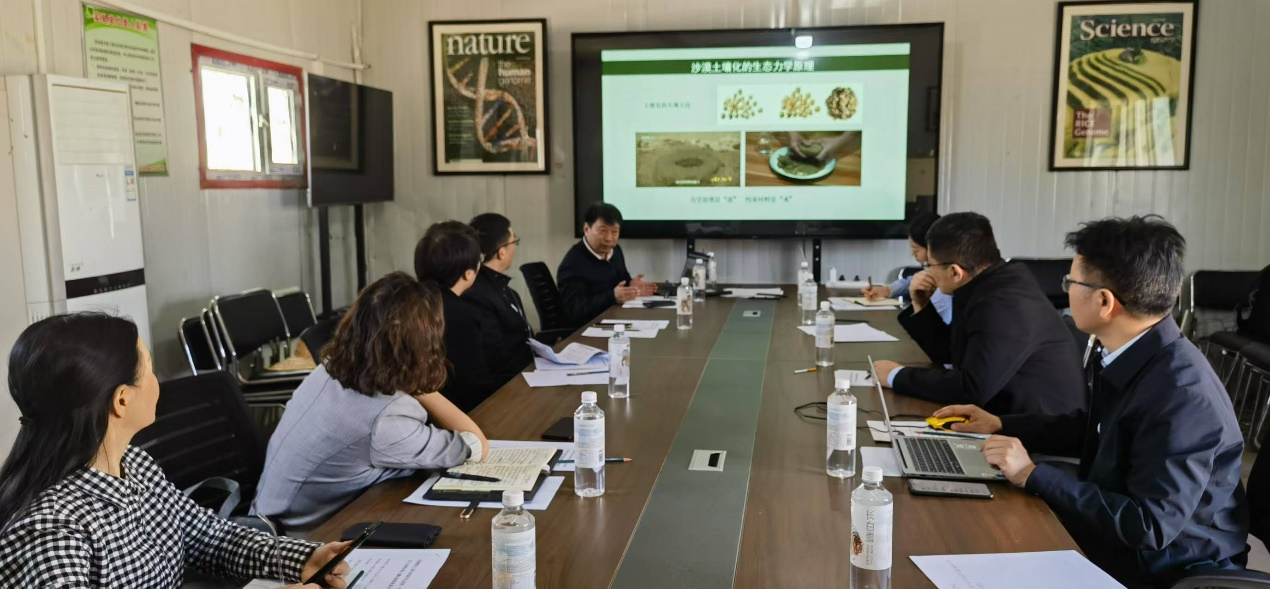Updated: May 13, 2025
On May 10th, Qu Rui, Deputy Secretary of the Chongqing Municipal Education Working Committee and Secretary of the Organization Department of the CPC Chongqing Municipal Committee; Ran Lidan, Director of the Office of the Chongqing Municipal Education Commission; Luo Shengqi, Director of the Secretariat of the Leading Group of the Chongqing Municipal Education Commission; and Tang Qingjun from the Chongqing Municipal Student Aid Management Center visited the Ulan Buh Desert Soilization Pilot Demonstration Base (hereinafter referred to as “the Base”) in Inner Mongolia.
They were accompanied by Dong Shaojiang, Standing Committee Member of the CPC Chongqing Jiaotong University (CQJTU) Committee and Vice President of the university; Yi Zhijian, former Vice President and Director of CQJTU’s Engineering Research Center for Eco-Mechanical Desertification Control and Ecosystem Carbon Sink; Ma Yinhua, Director of the Ecological Environment Research Center; Jin Jing, Deputy Director of the Office of the CPC CQJTU Committee; as well as Peng Kai and Li Ya from the Center.

Upon arrival at the Base, the delegation first visited the desert ecological restoration area. This area underwent soilization transformation in 2017 and received only minimal irrigation during the seedling stage. Since 2018, it has relied entirely on natural precipitation. Drought-resistant plants such as Siberian pea tree, alpine sweetvetch, budsage, and standing milkvetch have thrived under local natural conditions, forming a sustainable ecological barrier. Qu Rui and his team were deeply impressed by the vast scale and vibrant greenery of the area, recognizing its significant ecological value.

At the unmanaged land and natural ecological restoration zones of the Base, the delegation carefully observed the vegetation restoration. They attended on-site demonstrations of desert soilization, including the “inverted structure” (showed in a cross-sectional view of soilized desert land) demonstration, water retention experiments, and soilization processes of sand, while actively engaging with questions and suggestions throughout the visit.

Following the visit, a symposium was held, during which Dong Shaojiang delivered a welcome speech on behalf of the university. He expressed gratitude to Secretary Qu Rui and his team for their interest in and support of desert soilization technology. Yi Zhijian, representing the research team, then gave a presentation outlining the technology’s development history, theoretical innovations, technical breakthroughs, pilot validations, practical applications, benefits, and societal impact.
During the symposium, Ran Lidan expressed her admiration for the technology and the research team. Thanks to their efforts, there now exists an unexpected oasis in the desert, unexpectedly high-yielding farmland, and a transformed ecosystem that supports thriving flora and fauna. She proposed expanding the technology’s influence, securing government support, introducing professional teams, and accelerating its commercialization. She concluded her remarks with a pledge from the Education Commission Office to support the promotion of desert soilization technology.

Luo Shengqi, Director of the Secretariat of the Leading Group, praised Professor Yi Zhijian’s patriotism and embodiment of Chongqing’s city spirit—“tenacity, loyalty, openness, and ambition.” He remarked that the team’s work was deeply moving, and their efforts could turn deserts into oases and create flourishing landscapes, ultimately bringing joy and welfare to the people.
Qu Rui, Deputy Secretary of the Working Committee, emphasized that Desert Soilization technology represents a vivid practice and innovative exploration of Ecological Civilization (EC), offering an effective, green, and safe solution for realizing the dream of turning deserts into oases. He highlighted its significance in four key aspects:
1. Providing a Chinese solution to global desertification control;
2. Contributing original technology to China’s EC development;
3. Showcasing Chongqing’s technological innovation in desert greening;
4. Supporting CQJTU’s efforts to become a Double First-Class university.
Qu Rui also offered valuable suggestions for promoting and applying the technology:
1. Enhance top-level design: Approach the project from a global perspective, aligning it with the vision of a community with a shared future for mankind and the goals of Ecological Civilization, while integrating ecological, social, and industrial values.
2. Deepen theoretical research: Strengthen core technological innovation to increase influence and recognition, thereby gaining broader support.
3. Expand external collaboration: Actively pursue partnerships with national ministries, municipal departments, and enterprises to accelerate large-scale implementation.
At the close of the symposium, Qu Rui affirmed that the Chongqing Municipal Education Working Committee and the Chongqing Municipal Education Commission would provide full support for Desert Soilization technology. He expressed confidence that, through collective efforts, the technology and its applications would ultimately bring increasing benefits to both the nation and humanity.